An unassuming stream — just 18 feet across — pours forth from Lake Itasca, forming the start of the Mississippi River’s winding flow down 2,552 miles to the Gulf of Mexico. At this very point among the Northern Minnesota pines, Bishop Andrew H. Cozzens held high a golden monstrance on the afternoon of May 19, tracing the sign of the cross over the waters and the people gathered — a humble gesture pleading for a mighty river of grace to flow for the National Eucharistic Revival.
Here at the start of the waters once blessed and named by the earliest Catholic missionaries as the “River of the Immaculate Conception” — the bishop of Crookston, Minnesota, carrying Jesus in the Eucharist, turned onto a trail into the woods of Itasca State Park, followed by pilgrims whose hymns and psalms were punctuated by long periods of meditative silence — and short bursts of rain from the cloudy gray sky.
The Marian Route of the National Eucharistic Pilgrimage had begun at last.
The May 19 blessing of the Mississippi River headwaters marked the launch of the northern route of the National Eucharistic Pilgrimage, an eight-week journey with the Eucharist from four compass points across the U.S. All routes began their treks May 18-19, Pentecost weekend, with the other three routes starting from Brownsville, Texas; New Haven, Connecticut; and San Francisco.
The pilgrimage is part of the National Eucharistic Revival, a three-year initiative launched in 2022 by the U.S. bishops to inspire a deeper love and reverence for Jesus in the Eucharist, after a Pew Research Center survey found only one-third of U.S. Catholics believed the church’s teaching of Jesus being truly present in the Eucharist.
From these four directions, the pilgrimage routes trace what organizers call “a sign of the cross over the nation,” as pilgrims traverse a combined 6,500 miles across 27 states and 65 dioceses, through small towns, large cities and rural countryside — often on foot, always with the Eucharist — until they converge in Indianapolis for the July 17-21 National Eucharistic Congress.
“Brothers and sisters, the revival has to begin with you and me, and has to begin with our repentance, humbling ourselves, turning from our sin,” Bishop Cozzens, who chairs the board of the National Eucharistic Congress Inc., which is responsible for overseeing the congress in Indianapolis, told an estimated 2,500 people gathered for the outdoor Pentecost Mass held in a field near the state park’s entrance just prior to the headwaters’ blessing.
He encouraged them to seek to receive the Eucharist worthily through frequent confession, ideally monthly.
“That’s when the power of the Holy Spirit will be able to inhabit our hearts,” Bishop Cozzens said, calling them to undergo a “personal Pentecost,” and to ask the Lord “to enkindle in our hearts his fire, so that I can be the saint that he’s calling me to be.”
As the pilgrims meandered with the Eucharist through the wooded state park, cyclists and hikers respectfully stopped and waited for the procession to pass. Some, like Tom and Jeanne Young, dropped to their knees.
“You recognize that Jesus is really present, and here he is right with us,” Jeanne Young said.
Juan Diego Route: ‘The Spirit moves us to join Christ’
In contrast to the gray skies and cool temperatures of Northern Minnesota, the pilgrims and faithful gathered for the launch of the St. Juan Diego Route had bright blue skies and the Texas heat for the start of their journey at the southernmost tip of the U.S.
“The Holy Spirit moves us to join Christ in his sacrifice and in glorifying the Father, and we move with Christ because the Spirit moves us,” Brownsville Bishop Daniel E. Flores told the hundreds of Catholics who filled the Cathedral of the Immaculate Conception in Brownsville, Texas, to overflowing May 19 for the Pentecost solemn Mass.
The Mass, celebrated in English and Spanish, marked the start of the southern pilgrimage route named for St. Juan Diego Cuauhtlatoatzin, the Indigenous Catholic visionary who saw Our Lady of Guadalupe and had a deep devotion to the Eucharist.
Jaime Reyna, part of the National Eucharistic Congress’ planning team, came from Corpus Christi, Texas, to join the May 19 launch of the southern route. He explained that at points of the Eucharistic procession in Brownsville, the Blessed Sacrament was being transported in an open trailer decorated with white flowers pulled by a white truck, as hundreds of people followed. He added that people in their cars, or on the side of the road, would make the sign of the cross when seeing Jesus in the Eucharist passing by them.
About 350-500 people joined the day’s observances, according to a diocesan official.
Reyna said that organizers had not expected “to have hundreds of people walk in the Texas heat, and yet people did, and people were just wanting to keep walking, and keep walking.”
“It was just amazing to see that,” he said.
Shayla Elm, one of the perpetual pilgrims who hails from Denver, said she “witnessed a deep level of faith in this community that I’ve never really experienced before myself in a community here in America.”
Describing people responding to the procession by saying “Viva Cristo Rey” or spontaneously offering water to those walking on the road, and the faithful processing alongside her singing religious hymns, Elm said, “It was just really beautiful to see how personal the Lord is with the people here.”
Seton Route: Hearts burning for the Eucharist
On the day of the National Eucharistic Pilgrimage’s eastern route’s launch in New Haven, Connecticut, perpetual pilgrim Natalie Garza said her heart was burning.
At a May 18 presentation at the Blessed Michael McGivney Pilgrimage Center, the Kansas City, Kansas-area high school theology teacher shared her desire to “witness with my body the truth that I have professed with my words many times, that Jesus Christ is really present in the Eucharist.”
For Garza, the eight weeks of pilgrimage are both an opportunity to “intercede for the American church” and live out “a real expression and experience of discipleship,” walking alongside Jesus in the Eucharist.
Under a gray sky punctuated at times by a cold drizzling rain, scores of Catholics in New Haven sang and prayed in procession May 18 with the Eucharistic Jesus, held by Father Roger Landry, a priest of the Diocese of Fall River, Massachusetts, and Catholic chaplain at Columbia University.
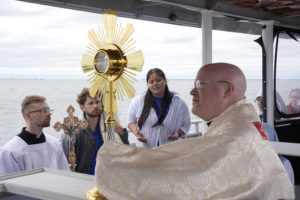
Father Roger Landry leads adoration as the Eucharistic travels by boat from New Haven to Bridgeport, Conn., May 19, 2024, as part of the National Eucharistic Pilgrimage. (OSV News photo/Paul Haring)
Archbishop Christopher J. Coyne of Hartford, Connecticut, celebrated an extended Pentecost Vigil Mass at New Haven’s St. Mary Church, the church where Blessed Michael McGivney, the Knights of Columbus’ founder, once served and where his remains are reposed. The archbishop prayed “for the gift of the Holy Spirit to be given to our nation during the Eucharistic Revival” and for the success of the eastern pilgrimage named after the first American-born canonized saint, St. Elizabeth Ann Seton.
“Our life as Christians is a pilgrimage along the path of salvation. But it is not a solitary one. It is one in which we walk together as the body of Christ,” the archbishop said. “In seeking after what God desires of us, we become pilgrims of no path but the one that he would have us follow.”
The Seton Route pilgrims experienced an overnight Holy Hour organized by young adult groups, which concluded at 7 a.m. May 19 and led into a 1.5-mile Eucharistic procession from St. Mary Church to St. Joseph Church for Pentecost Mass. Following Mass, the Seton Route’s perpetual pilgrims headed to Long Wharf, New Haven’s waterfront district.
Much like Jesus did with his first disciples many times in the Gospels, the Eucharistic Jesus, held aloft by the Seton Route’s chaplain, Father Landry, boarded a boat with the pilgrim-disciples and headed out on the sea — this time venturing into the Long Island Sound, toward Bridgeport, Connecticut.
Serra Route: Proclaiming Jesus’ ‘way of love’
On the West Coast, Jesus’ travels in Galilee were also on the minds of the pilgrims gathered in San Francisco for the start of the western branch of the National Eucharistic Pilgrimage.
“The last time Jesus walked this far across the face of the earth was in Galilee, so to be able to carry him will be extraordinary,” said Wisconsin native Jack Krebs, one of two drivers of the van specially equipped with a tabernacle where the pilgrims will travel when they are not walking the St. Junipero Serra Route of the National Eucharistic Revival.
The six young adults who are the Serra Route’s perpetual pilgrims received a special blessing from Oakland Bishop Michael Barber at a May 18 prayer vigil, consisting of Eucharistic adoration and Benediction at Mission Dolores Basilica.
“Junipero Serra would be just in love with this whole idea, because his notion was he was bringing the Gospel and the Eucharist into an area where it had never been brought before,” said Andrew Galvan, curator of Mission Dolores and a descendant of the Ohlone Indians evangelized by St. Junipero Serra, noting the saint would often celebrate Eucharistic processions.
The Serra Route finally began in earnest following the Pentecost Mass May 19 at St. Mary of the Assumption Cathedral in San Francisco.
“Christ breathes new life into us, his church,” said Archbishop Salvatore J. Cordileone of San Francisco, who celebrated the Mass.
He urged those gathered to follow Jesus Christ in his “way of love,” living publicly their faith in such a way that people perceive “a better way to live.”
He said Jesus’ way of love “has the power to change history, to change hearts, to bring the life of heaven to earth and to bring us to the life of heaven when we pass from this world to the next.”
At the day’s conclusion, after leading about 1,000 pilgrims across the Golden Gate Bridge, the San Francisco archbishop raised the monstrance and blessed the city with the Eucharist from a vista point across from the city.
He then blessed the faithful who had crossed the bridge with him, and the perpetual pilgrims who would continue to journey with Jesus, truly present in the Eucharist, all the way to Indianapolis for the National Eucharistic Congress.


 “Kosovo is the Grave Where we Have Been Buried for Centuries and from Which we Have Risen Again and Again”The reality in which we live today in Kosovo and Metohija can undoubtedly be called, “Divine education”.
“Kosovo is the Grave Where we Have Been Buried for Centuries and from Which we Have Risen Again and Again”The reality in which we live today in Kosovo and Metohija can undoubtedly be called, “Divine education”.



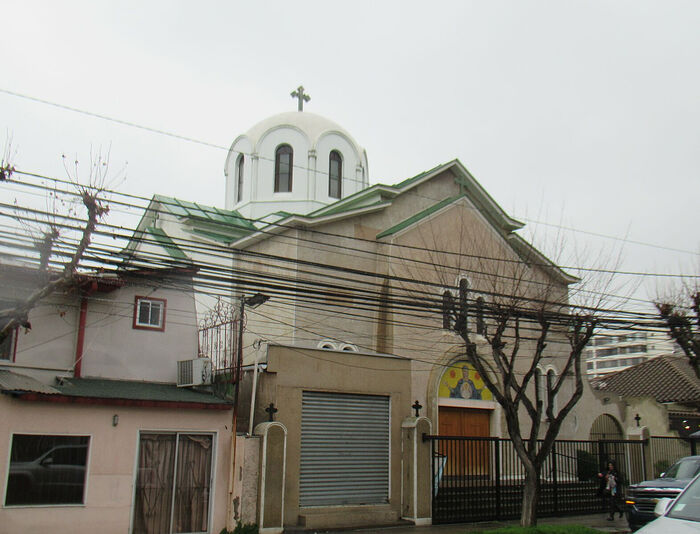

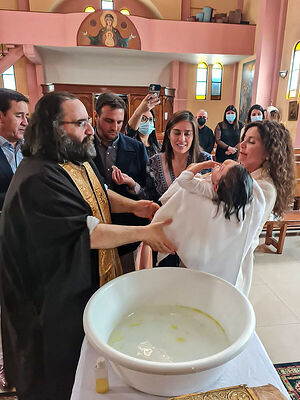
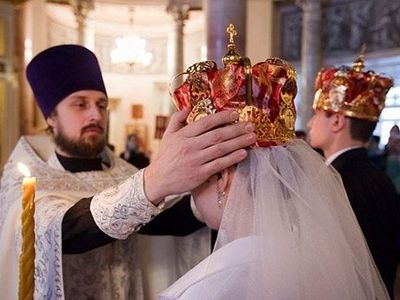 The Mystery of Marriage—the Spiritual Foundation of the FamilyWhy is it necessary to get crowned in the Church? What is the symbolism of the rings and crowns? Why do the bride and groom stand facing east during the crowning? What does the phrase “to love as you love yourself” mean? What is the proper understanding of the words: “A wife should fear her husband?”
The Mystery of Marriage—the Spiritual Foundation of the FamilyWhy is it necessary to get crowned in the Church? What is the symbolism of the rings and crowns? Why do the bride and groom stand facing east during the crowning? What does the phrase “to love as you love yourself” mean? What is the proper understanding of the words: “A wife should fear her husband?”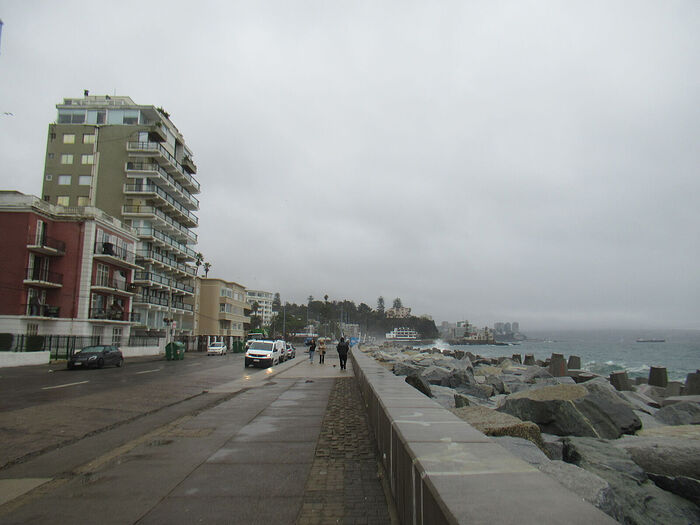
 These Children Grew Up… and Stayed in ChurchIt is no longer a secret to anyone that some children who were brought up in religious families drift away from church in their teens, while some others abandon the Church altogether, quite often for the remainder of their lives. Is there any way to avoid this? What is the measure of parental responsibility for the choice of faith that children make? We spoke about this with Archpriest Maxim Pervozvansky.
These Children Grew Up… and Stayed in ChurchIt is no longer a secret to anyone that some children who were brought up in religious families drift away from church in their teens, while some others abandon the Church altogether, quite often for the remainder of their lives. Is there any way to avoid this? What is the measure of parental responsibility for the choice of faith that children make? We spoke about this with Archpriest Maxim Pervozvansky.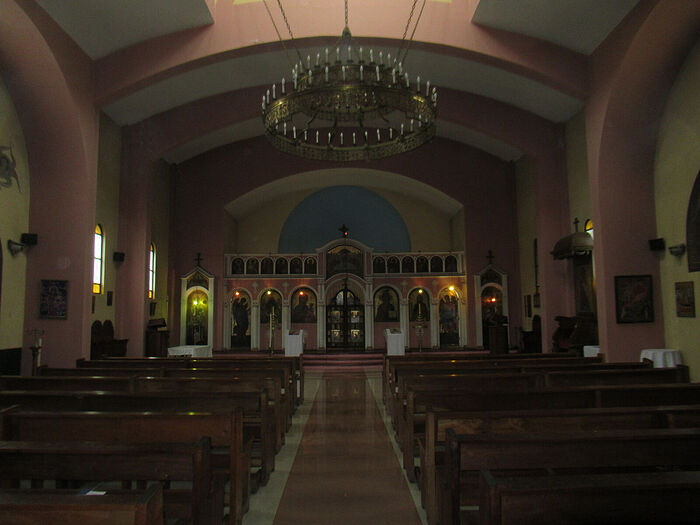
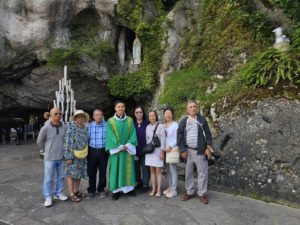
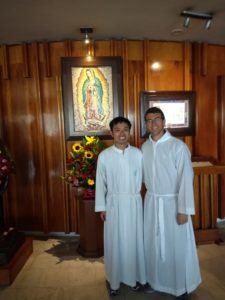

 Estonian Parliament declares Russian Church accomplice in state aggression, Estonian hierarch respondsThe Riigikogu adopted a statement on Monday, May 6, which formally identifies the Moscow Patriarchate as a supporter of Russian aggression against Ukraine.
Estonian Parliament declares Russian Church accomplice in state aggression, Estonian hierarch respondsThe Riigikogu adopted a statement on Monday, May 6, which formally identifies the Moscow Patriarchate as a supporter of Russian aggression against Ukraine. Estonia’s Pukhtitsa Monastery: If the state wants us to change jurisdiction, it can make its own appeal to the PatriarchIf the government of the Republic of Estonia, represented by the Minister of Internal Affairs, insists on changing the jurisdiction of the monastery, then as the initiator of the process, the government itself may approach Patriarch Kirill with a proposal to cancel the stavropegial status of Pukhtitsa Monastery. Abbess Philareta noted that such a course is canonically legitimate for the convent’s residents.”>calling on the Church and monastery to separate from the Patriarchate.
Estonia’s Pukhtitsa Monastery: If the state wants us to change jurisdiction, it can make its own appeal to the PatriarchIf the government of the Republic of Estonia, represented by the Minister of Internal Affairs, insists on changing the jurisdiction of the monastery, then as the initiator of the process, the government itself may approach Patriarch Kirill with a proposal to cancel the stavropegial status of Pukhtitsa Monastery. Abbess Philareta noted that such a course is canonically legitimate for the convent’s residents.”>calling on the Church and monastery to separate from the Patriarchate.